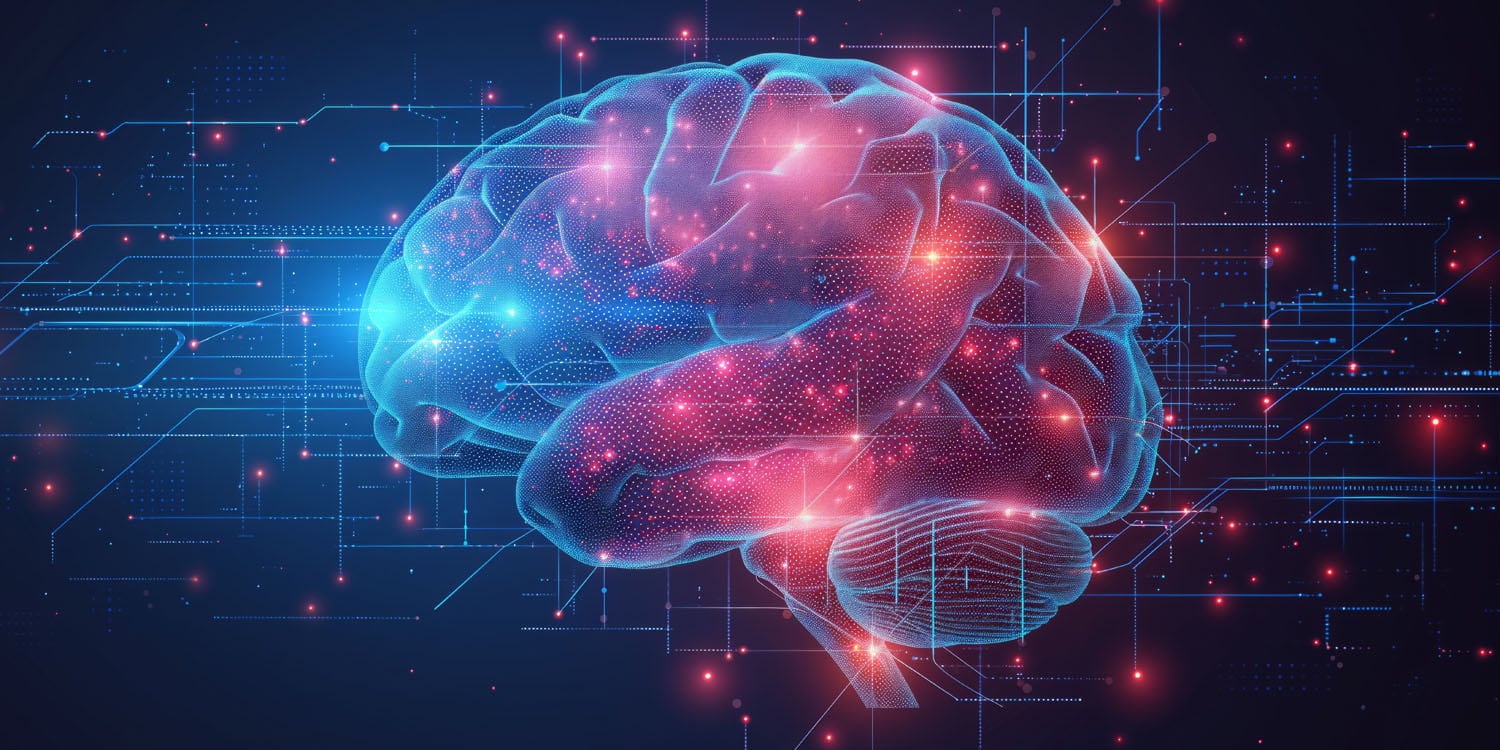A recent study found that brain connectivity patterns in children are strongly associated with their sex assigned at birth, particularly within the somatomotor, visual, control, and limbic networks, while gender-related connectivity patterns were more dispersed and less pronounced. These findings, published in Science Advances, provide evidence that sex and gender are distinct concepts that are each associated with different patterns of brain connectivity.
Notably, however, while these patterns aligned with parent-reported gender behaviors, they did not reliably correspond to self-reported gender identity, highlighting the complexity of gender as a construct.
The motivation behind this study stemmed from the need to better understand how sex and gender uniquely influence brain development and organization. Sex refers to the biological attributes assigned at birth, such as anatomy and chromosomes, while gender encompasses the roles, behaviors, and identities that society attributes to individuals.
Previous research has often conflated these two concepts, treating them as interchangeable, which potentially obscures their relationship to brain structure and function.
“Sex and gender are fundamental aspects of who we are as people. In my research, I’m interested in understanding how sex and gender, in terms of how we experience and perceive them, shape who we are as individuals, both in terms of biology and behavior,” said study author Elvisha Dhamala, an assistant professor and director of the Brain-Based Predictive Modeling (BPM) lab at the Feinstein Institutes for Medical Research.
The researchers utilized data from the Adolescent Brain Cognitive Development (ABCD) Study, a large-scale research project that assessed a diverse sample of children and adolescents on various neuroimaging, behavioral, developmental, and psychiatric measures. The final sample for this particular study included 4,757 children aged 9 to 10, with nearly equal representation of those assigned female at birth and assigned male at birth.
Participants underwent magnetic resonance imaging (MRI) scans to capture detailed images of their brain structures and functional connectivity patterns. Functional connectivity refers to the coordinated activity between different regions of the brain, which can be measured while participants are at rest. These images were collected using standardized protocols across multiple sites in the United States to ensure consistency and reliability.
In addition to the brain scans, both the children and their parents completed gender surveys. The self-reported surveys for the children included questions about their felt gender identity, gender expression, and overall contentedness with their gender. Parents were asked to complete surveys that assessed their child’s sex-typed behaviors during play and any signs of gender dysphoria. These combined measures provided a comprehensive view of each child’s gender experience from both personal and external perspectives.
To analyze the relationship between brain connectivity patterns and sex and gender, the researchers used machine learning techniques, specifically linear ridge regression models. These models are designed to predict outcomes based on input data while avoiding overfitting, which can lead to inaccurate results. The models were trained and tested using a cross-validation approach, where the data was split into multiple subsets to ensure that the findings were robust and not dependent on any particular subset of the data.
The researchers created separate models to predict sex and gender based on the functional connectivity data. For sex predictions, the models included all participants, while for gender predictions, the models were trained separately for female and male children. This allowed the researchers to examine whether the brain connectivity patterns associated with gender were influenced by sex.
“The paper uses a type of artificial intelligence called machine learning to build a computer model that can predict a child’s sex at birth or self-reported and parent reported gender from their brain scan. In this way, they can determine which type of functional connectivity are associated with sex and gender,” explained Derek Hill, a professor at University College London who was not involved in the study.
The analysis revealed that certain brain networks are strongly associated with the sex assigned at birth. Specifically, the somatomotor, visual, control, and limbic networks exhibited significant functional connectivity patterns related to sex. These networks are crucial for various fundamental processes, including sensory and motor functions, visual processing, and emotional regulation. The strong association between these networks and sex suggests that biological sex has a pronounced influence on specific brain regions’ functional organization.
In contrast to the relatively localized sex-associated networks, the brain connectivity patterns associated with parent-reported gender were found to be more dispersed throughout the cortex. This dispersion indicates that gender, as reported by parents, involves a broader range of brain areas.
“We weren’t sure what to expect when we started looking at the associations between brain networks and gender,” Dhamala told PsyPost. “We thought there would be some sort of relationship but we didn’t know what that relationship would be given the limited prior research on this topic, so it was really exciting when we found that gender mapped onto such a dispersed set of brain networks. This tells us that the influences of gender are widespread throughout the brain, further emphasizing the need to really understand them.”
The study also highlighted notable differences in how gender-related brain connectivity manifested in children assigned female at birth versus those assigned male at birth. For female children, the strongest associations with parent-reported gender were observed in the temporal parietal and attention networks. These areas are involved in processing social information and attentional control, suggesting that gender identity and expression in female children might be closely tied to these cognitive processes.
In male children, the associations with parent-reported gender were more widespread, involving several networks including the default mode, limbic, dorsal and ventral attention, somatomotor, and visual networks. This broader distribution of gender-related connectivity patterns indicates that gender identity and expression in male children might be influenced by a wider array of brain functions, possibly reflecting different socialization experiences and expectations.
Another key finding was that male children exhibited greater alignment between their sex and gender compared to female children. This sex congruence refers to the extent to which an individual’s gender identity aligns with their assigned sex at birth. The study found that parent-reported gender scores were more closely aligned with the assigned sex in male children than in female children. This finding aligns with existing literature suggesting that societal pressures might lead male children to conform more strongly to traditional gender norms.
“In this study, we show that sex and gender map onto different brain networks,” Dhamala summarized. “This tells us that sex and gender are distinct not only in society, but also in biology. More broadly, moving forward in biomedical research, it’s critical that we differentiate between sex and gender in how we collect, analyze, and interpret our data and our research findings.”
The research also highlights the complexity of studying gender. “Sex is not binary,” Dhamala said. “However, because the participants in the dataset for whom we had complete imaging, sex ,and gender data either reported female or male assigned sex at birth, we treated sex as a binary. In the future, we hope to understand how other sexes also influence the brain.”
“Additionally, in terms of gender, although we considered it on a continuum, we only considered a single snapshot of a few aspects of gender. More work needs to be done to look at the associations between the brain and different aspects of gender (e.g., how you describe your own gender versus how others perceive your gender). We also need to acknowledge the fluid nature of gender and consider how that fluidity may also influence the brain throughout the lifespan.”
These findings have significant implications for understanding the neurobiological bases of sex and gender differences in behavior and health. By revealing the distinct brain networks associated with sex and gender, the study lays the groundwork for future research to explore how these influences interact and change over time, particularly through critical developmental periods such as puberty.
“This work opens a new line of research focusing on gender influences on brain and behavior, beyond just the influences of sex, with substantial implication for how people express themselves in the world and experience the world around them,” Dhamala explained. “In my own research laboratory, I’m really excited to look at how gender drives individual differences in our brains and our behavioral traits, with a particular focus on mental illnesses which have a distinct gender component to them.”
However, there is an important caveats to consider. The models failed to predict self-reported gender scores accurately in either children assigned female at birth or children assigned male at birth. In other words, while brain connectivity patterns were associated with parent-reported gender behaviors, they did not reliably correspond to the children’s own perceptions of their gender identity.
“This study reports relatively weak brain functional connectivity associations with parent-reported ‘gender’ over and above sex assigned at birth,” said Anne-Lise Goddings, an honorary senior clinical lecturer at Imperial College London (who was not involved in the study), in an statement to the Science Media Centre.
“It’s crucial when interpreting this study to contextualise that this ‘gender’ measure focuses mainly on how much parents report their children engaged in stereotypical ‘gendered’ play. Parents answered questions including about how much their child plays with ‘girl-type dolls such as Barbie,’ ‘boy-type dolls such as GI-Joe,’ ‘how much they play sports with girls (but not boys)’ and ‘with boys (but not girls),’ and how much they ‘imitate male and female TV and movie characters.’”
“This measure of gender doesn’t capture the broader concept of gender identity which incorporates an individual’s own feelings and perceptions of their identity,” Goddings continued. “In the absence of clear hypotheses or accounting for confounders, the findings of the study are of limited impact and should be interpreted with caution. Later Adolescent Brain Cognitive Development project (ABCD) study waves and other cohort studies may help to improve understanding of this complex topic.”
The study, “Functional brain networks are associated with both sex and gender in children,” was authored by Elvisha Dhamala, Dani S. Bassett, B.T. Thomas Yeo, and Avram J. Holmes.




